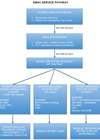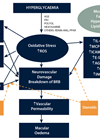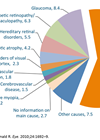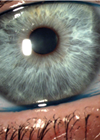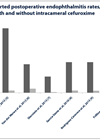Ophthalmology archive for 2015
The Global Vision Database
The overall goal of the Global Vision Database (GVD) [1] is to develop and deploy new and improved evidence on the prevalence of blindness and vision impairment (VI) globally. It is a repository which allows us to assess the causes...
Initiatives in macular service provision
A report from Monitor in October 2015 identifies good practices that will realise most of the potential productivity gain in elective care available to NHS hospitals. These include: stratifying patients by risk and creating low-complexity pathways for lower-risk patients (tailoring...
Stem cell therapy for Parkinson’s disease: researching for an effective cure
Neurodegenerative diseases are characterised by the chronic and progressive loss of neurons, which in turn results in loss of cognitive and physical functions. The World Health Organization has estimated that the disability-adjusted life years lost from neurological disease was about...
Blind Veterans UK calls on eye health professionals to direct blind and vision impaired veterans to vital support
A national charity is asking ophthalmologists and eye health professionals to help them reach out to the tens of thousands of blind and vision impaired ex-service men and women who are currently missing out on vital support to help them...
Pathophysiology of diabetic macular oedema: why combination therapy may be better
The prevalence of diabetes has continued to increase over the years. It is currently estimated that there are 382 million with diabetes worldwide in 2013, and that this figure is expected to rise to 592 million by 2035 [1]. In...
Strategies for managing neovascular AMD and DMO in routine clinical care
Treatment practice in the management of neovascular age-related macular degeneration (AMD) and diabetic macular oedema (DMO) illustrate increasing adoption of patient-tailored treatment approaches based on initial diagnosis and regular monitoring of imaging and visual outcomes in routine clinical care. The...
Blinking blepharitis has a lot to answer for…
Never ignore the small things’…someone once said. There is no doubt blepharitis is one of the most common eye conditions encountered daily, but with the typical pressures of a busy outpatient department, the management of more obvious, sight-threatening conditions necessarily...
Simulated ocular surgery – strabismus surgery
See also Simulated ocular surgery and Simulated ocular surgery: pars plane vitrectomy and scleral buckling surgery Strabismus surgery requires a range of skills, distinct to those required for intraocular surgery. Even if a trainee does not plan to become a...
PACK-crosslinking for infectious keratitis
Corneal cross-linking with riboflavin and UV-A light (CXL) is a technology that has been initially developed to treat corneal ectatic disorders [1]. Its effect in stabilising diseases such as keratoconus was reported in numerous trials with excellent long-term outcomes and...
Can 3D facial imaging improve patient management in disfiguring eye disease?
Fight for Sight is the leading UK charity funder of eye research. Since the 2013 Sight Loss and Vision Priority Setting Partnership we have encouraged our researchers to work on priorities jointly identified by people affected by sight loss and...
Practice tips: Directions in cataract surgery services and preventing postcataract endophthalmitis
Future directions in the delivery of high quality cataract surgery services and approved intracameral prophylactic approaches to lowering the risk of postcataract infective endophthalmitis were debated by consultant ophthalmic surgeons in a recent London seminar, held at the Royal Society...
Simulated ocular surgery: pars plana vitrectomy and scleral buckling surgery
See also Simulated ocular surgery and Simulated ocular surgery - strabismus surgery In this second article on ocular surgery simulation, we will discuss how vitreoretinal surgery can be simulated using high tech virtual reality modalities such as the Eyesi, as...



